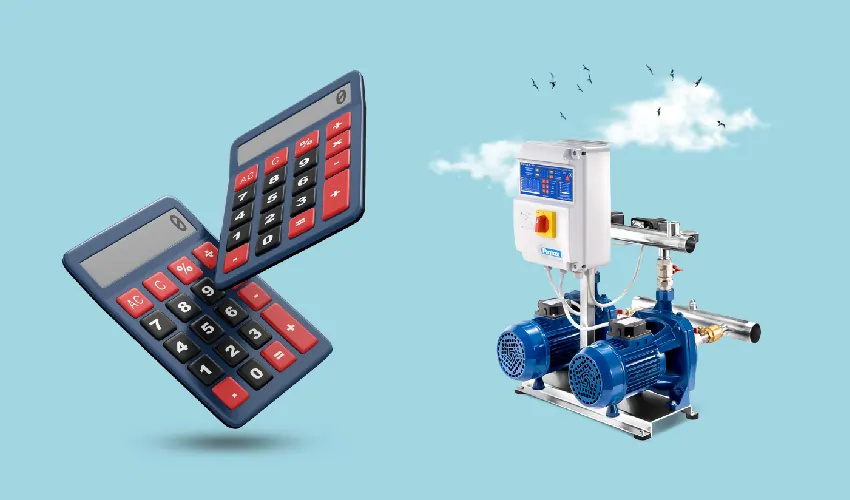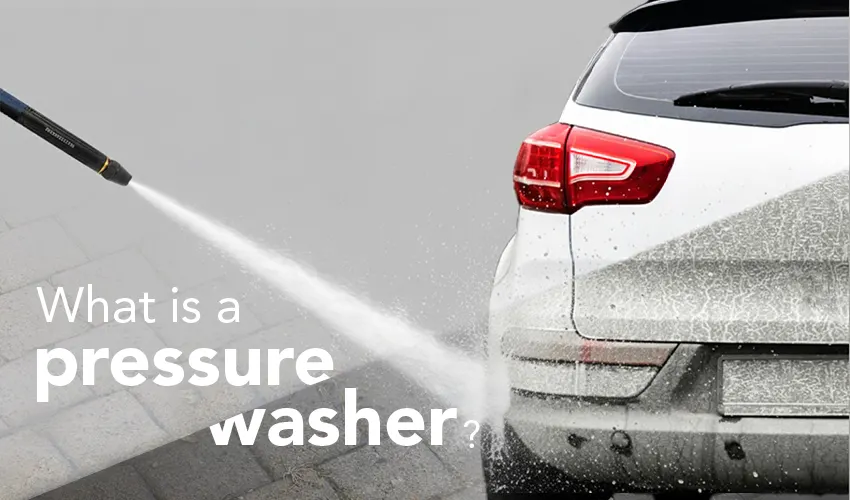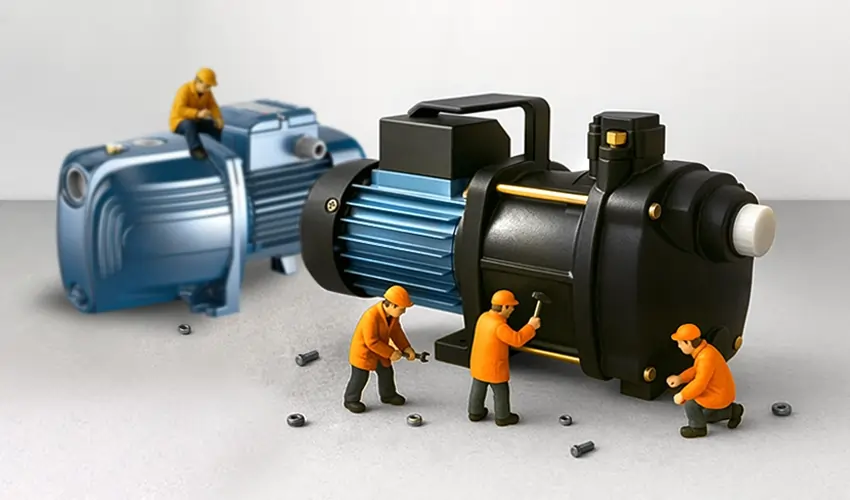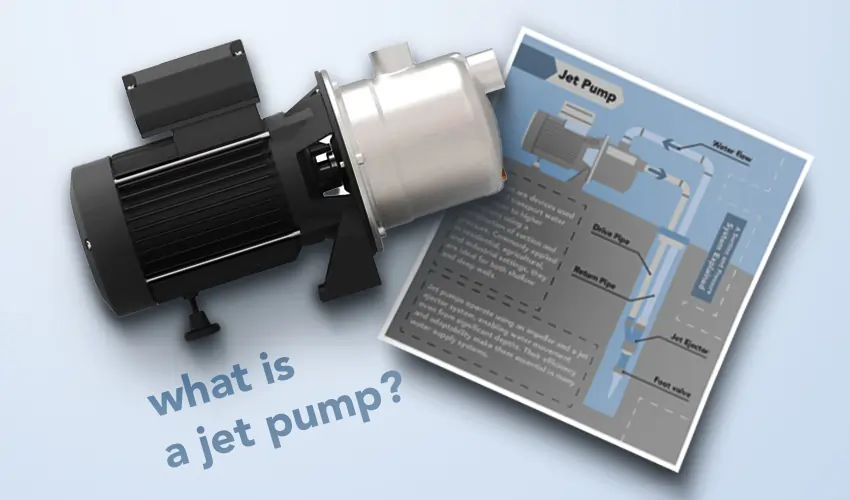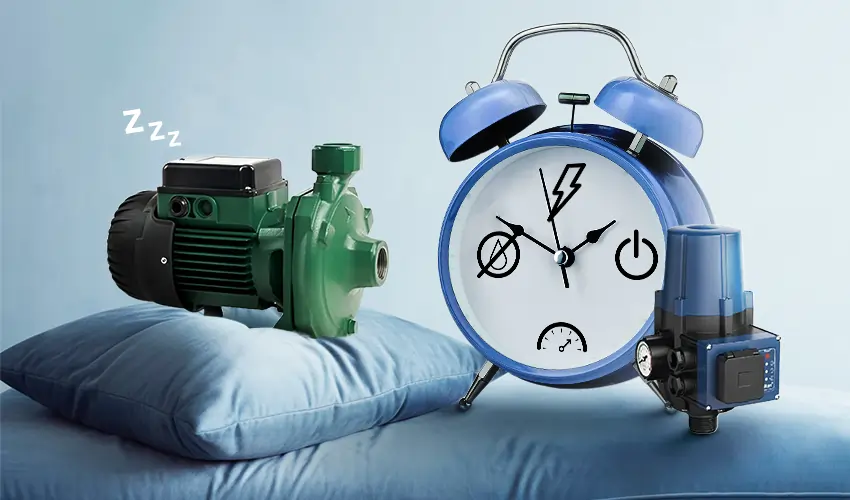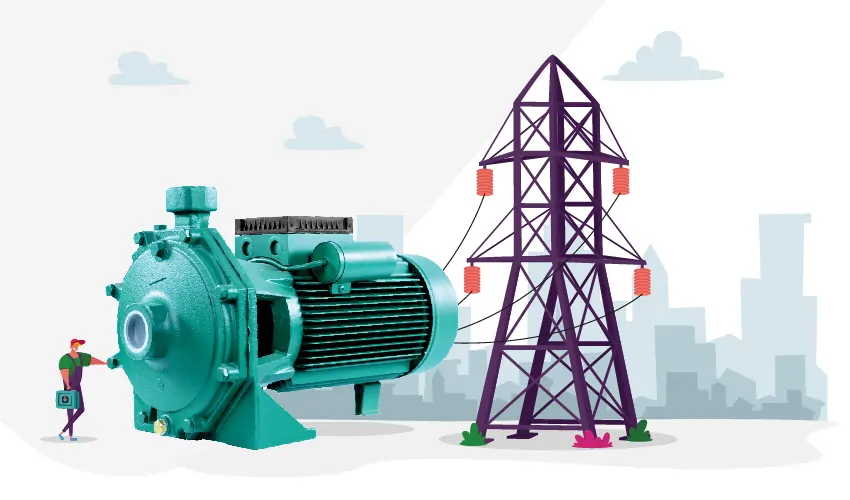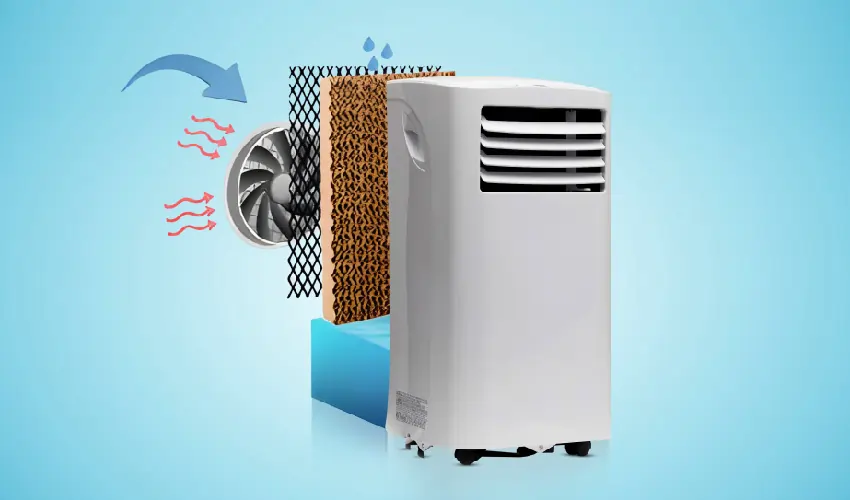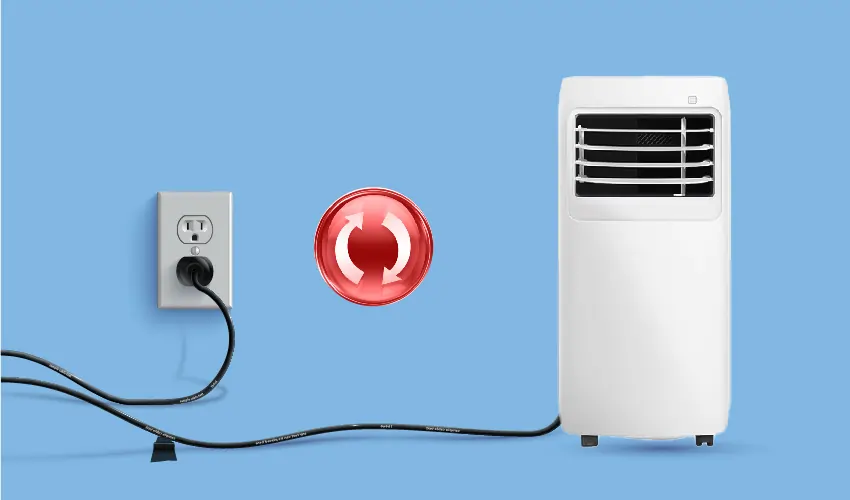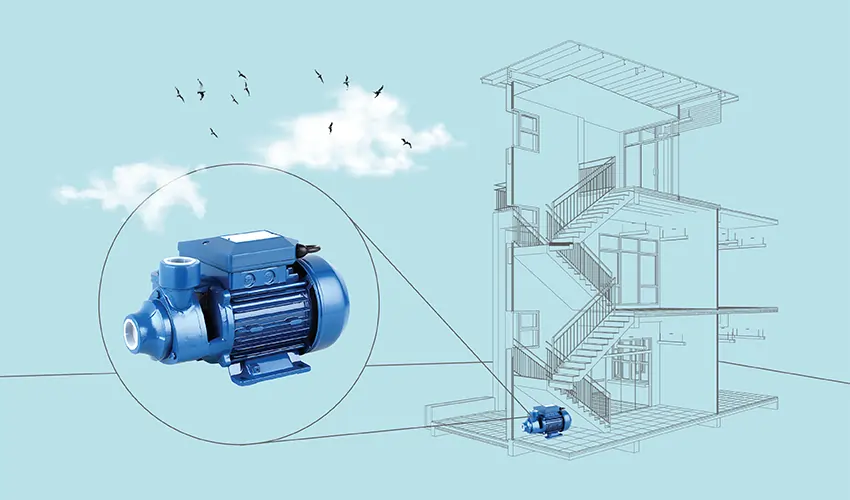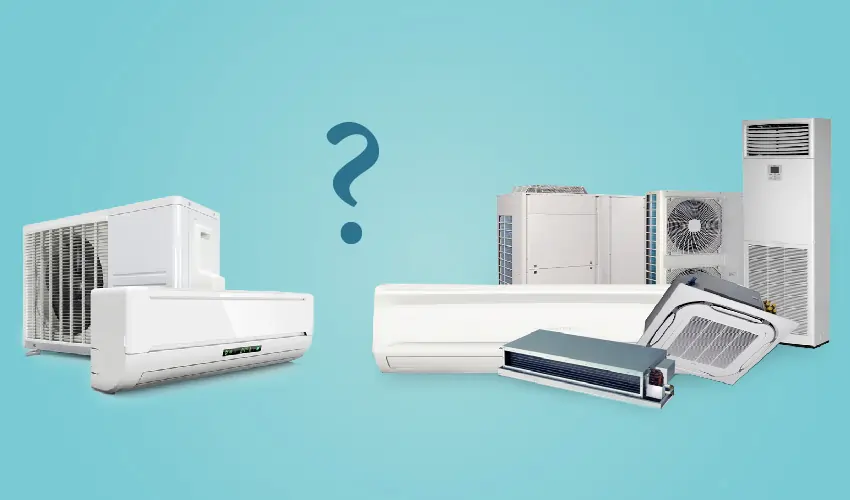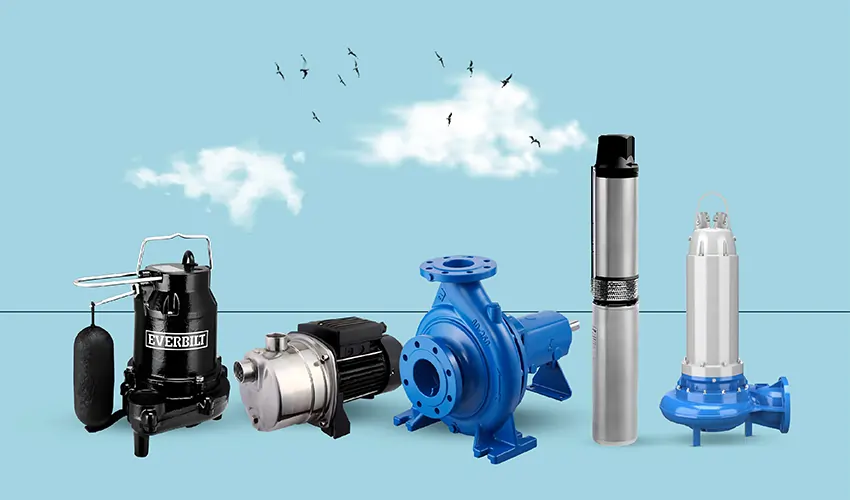Sizing a Booster Pump
Selecting the right booster pump size is crucial for the efficient performance of a water or fluid system.
What Is Booster Pump Size?
Here are some key considerations when determining the size of a booster pump:
- Flow Rate (GPM or LPM): The required flow rate of the system is a critical factor. The booster pump should be capable of delivering the desired volume of water or fluid per minute.
- Pressure (PSI or Bar): The pressure requirements of the system also play a crucial role. The booster pump needs to provide sufficient pressure to meet the needs of the application.
- Total Dynamic Head (TDH): TDH is the total resistance or pressure the pump needs to overcome in the system, including factors like pipe friction, elevation changes, and other resistance elements.
- Pipe Size and Length: The size and length of the pipes in the system impact the friction losses and affect the pump’s performance. A larger pipe or longer pipe length may require a more powerful booster pump.
- Type of Fluid: The type of fluid being pumped can influence the choice of materials for the pump and may affect the pump’s performance.
- Duty Cycle: Consider whether the pump will be running continuously or intermittently. Continuous-duty pumps are designed for continuous operation, while intermittent-duty pumps have specified on/off cycles.
- Voltage and Power Supply: Ensure that the booster pump is compatible with the available power supply and voltage.
- System Efficiency: Factor in the efficiency of the entire system, including the pump, to determine the actual power required.
How to Calculate the Required Flow Rate and Head?
To calculate the required flow rate and head for a pumping system, you’ll need to consider the specific requirements of your application. Here’s a general guide on how to calculate these parameters:
Required Flow Rate (Q)
- Determine the Demand: Identify the water or fluid demand in your system. This could be based on the number of fixtures, appliances, or processes that require water.
- Sum the Demands: Add up the individual flow rates or demands of all the components in the system. This will give you the total demand in gallons per minute (GPM) or liters per minute (LPM).
- Consider Safety Margins: Factor in any safety margins or additional flow requirements to ensure the pump can handle variations in demand.
Required Head (H)
- Calculate Static Head: Determine the static head, which is the vertical distance the water needs to be lifted from the source (e.g., a well) to the highest point in the system. This is usually measured in feet or meters.
- Determine Friction Head Loss: Calculate the friction head loss in the pipes. This involves considering the pipe material, diameter, and length, as well as any fittings. You can use the Darcy-Weisbach equation or pipe friction charts for this calculation.
- Include Additional Head: Add any additional head requirements, such as overcoming elevation changes, pressure losses in components (valves, filters, etc.), and other resistance factors.
- Consider Pressure at the Outlet: If the system requires a specific pressure at the outlet (e.g., to overcome resistance in fixtures), include this in your head calculation.
Pump Head-Capacity Curve
Once you have the total head and flow rate requirements, consult the pump head-capacity curve provided by the pump manufacturer. This curve shows how the pump’s head and capacity vary at different operating points. Choose a pump that intersects with your required flow rate and head on the curve.
Pump Efficiency
Consider the efficiency of the pump when calculating the actual power requirements. Pump efficiency is the ratio of water power output to shaft power input. The pump’s efficiency can be obtained from the manufacturer’s data.
Example:
Let’s say you have a system that requires 50 GPM at a total head of 60 feet. You would look for a pump that intersects with these values on the pump’s head-capacity curve.
Selecting the Right Booster Pump Size
Selecting the right booster pump size involves considering various factors to ensure it meets the specific requirements of your water or fluid system. Here’s a step-by-step guide to help you in the selection process:
- Determine System Requirements: Identify the required flow rate (Q) and total dynamic head (H) for your system. Consider factors such as the number of fixtures, appliances, and the distance the water needs to travel.
- Gather System Information: Collect information about your system, including pipe sizes, lengths, elevations, and any additional components (valves, filters, etc.).
- Calculate Total Dynamic Head (TDH): Determine the static head (vertical lift), friction head losses in pipes, and any additional head requirements. Sum these values to get the total dynamic head.
- Select Pump Type: Choose the appropriate type of booster pump based on your system requirements. Common types include centrifugal pumps, jet pumps, and multi-stage pumps.
- Consult Pump Curves: Obtain pump curves from manufacturers for the pumps you are considering. These curves show how the pump performs at different flow rates and heads.
- Match System Curve with Pump Curve: Plot the system curve based on your total dynamic head and flow rate requirements. Overlay this with the pump curves to find the intersection point. The selected pump should operate near this point.
- Consider Efficiency: Take into account the efficiency of the pump. The efficiency of a pump is the ratio of water power output to the shaft power input. Choose a pump that provides the required output with the least input power.
- Verify NPSH (Net Positive Suction Head): Ensure that the selected pump has a net positive suction head (NPSH) within the available range in your system. This prevents cavitation, a phenomenon that can damage the pump.
- Check Material Compatibility: Verify that the pump materials are compatible with the fluid being pumped. This is important to prevent corrosion or other chemical reactions.
- Consider Control Options: Evaluate control options for the booster pump. Depending on the application, you may need features such as variable speed drives, pressure sensors, or automatic controls.
- Factor in Future Growth: If there’s potential for future growth or changes in demand, consider selecting a pump that can accommodate increased flow rates or head requirements.
- Consult with Experts: If in doubt, consult with pump specialists or engineers who can provide more detailed analysis and recommendations based on your specific system parameters.
Common Mistakes to Avoid When Sizing a Booster Pump
When sizing a booster pump, several common mistakes can be made that may lead to inefficiencies, increased energy consumption, and potential issues with the pumping system. Here are some common mistakes to avoid when determining the Right Booster Pump Size:
Neglecting System Analysis
- Mistake: Failing to conduct a thorough analysis of the entire system, including pipe sizes, lengths, elevations, and other components.
- Solution: Perform a comprehensive system analysis to accurately determine the total dynamic head, flow rate requirements, and other relevant parameters.
Ignoring Safety Margins
- Mistake: Not accounting for safety margins or additional flow and head requirements in the system design.
- Solution: Include safety margins to accommodate variations in demand and ensure the pump can handle peak requirements.
Neglecting Pump Curves
- Mistake: Selecting a pump without carefully examining the manufacturer’s pump curves.
- Solution: Study the pump curves to ensure that the selected pump operates efficiently within the desired range of flow rates and head.
Overlooking Pump Efficiency
- Mistake: Ignoring the efficiency of the pump during the selection process.
- Solution: Choose a pump with high efficiency to minimize energy consumption and operating costs.
Ignoring Net Positive Suction Head (NPSH)
- Mistake: Neglecting the NPSH requirement for the pump, which can lead to cavitation.
- Solution: Verify that the pump’s NPSH requirement is within the available range in the system to prevent cavitation.
Selecting the Wrong Pump Type
- Mistake: Choosing a pump type that is not suitable for the application or system requirements.
- Solution: Select the appropriate pump type (e.g., centrifugal, jet, multi-stage) based on the specific needs of the system.
Not Considering Future Growth
- Mistake: Failing to account for potential future growth or changes in demand.
- Solution: Choose a pump that can accommodate future increases in flow rates or head requirements to avoid the need for frequent system upgrades.
Ignoring Material Compatibility
- Mistake: Neglecting to check whether the pump materials are compatible with the fluid being pumped.
- Solution: Ensure that the pump materials are resistant to corrosion and other chemical reactions based on the properties of the fluid.
Underestimating Control Needs
- Mistake: Overlooking the importance of control options such as variable speed drives or automatic controls.
- Solution: Consider the control needs of the system and select a pump with appropriate control features.
Not Consulting with Experts
- Mistake: Trying to size a booster pump without seeking input from pump specialists or engineers.
- Solution: Consult with experts who can provide valuable insights, perform detailed analysis, and offer recommendations based on your specific system parameters.
Conclusion
To size a booster pump effectively, conduct a thorough system analysis, calculate accurate flow rates and total dynamic head, consider safety margins, study pump curves for efficiency, verify NPSH requirements, select the appropriate pump type, check material compatibility, plan for future growth, and consult with pump specialists for expert guidance.

